Most counter-cyclical investors will tell you to buy at the bottom and possibly even sell at the top. But how do you know if a market is at the bottom?
The following chart shows the change in median for a certain state capital.
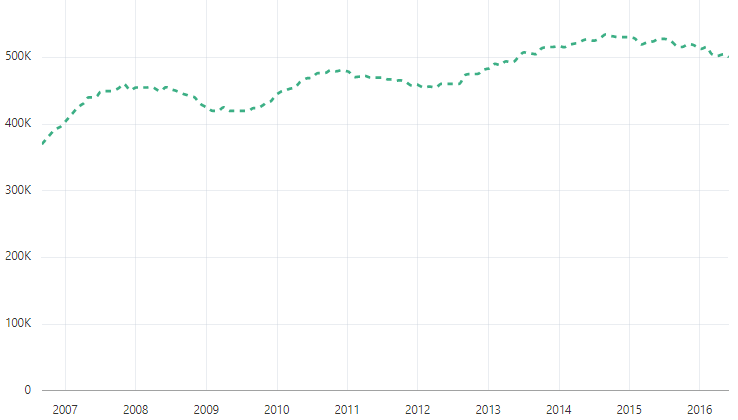
This city shows the typical surge and slough of market cycles. There’s a rapid rise in values, followed by a levelling off, possibly even a correction and then the upward growth starts again.
Looking at the chart, do you think this market is about to start its next surge of growth? In 2016 a few property experts/commentators started to suggest this city would be the next growth city after Sydney. Here’s what happened over the next year:
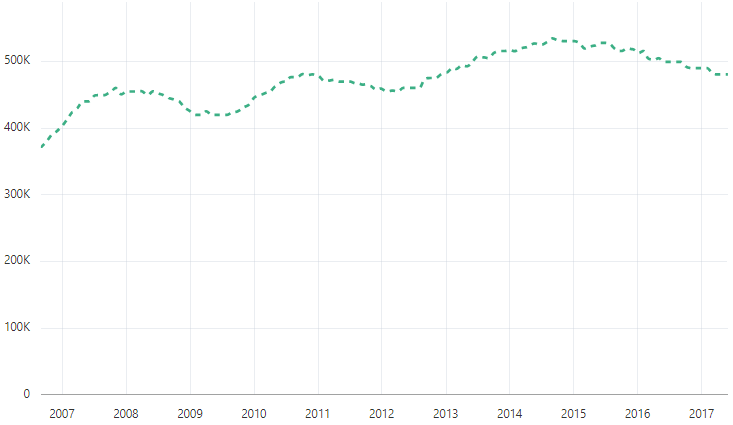
Prices fell about another $20,000. The city is Brisbane. During 2016 Sydney had double digit growth while Brisbane declined. But the experts got even louder and here’s what happened over the next year:
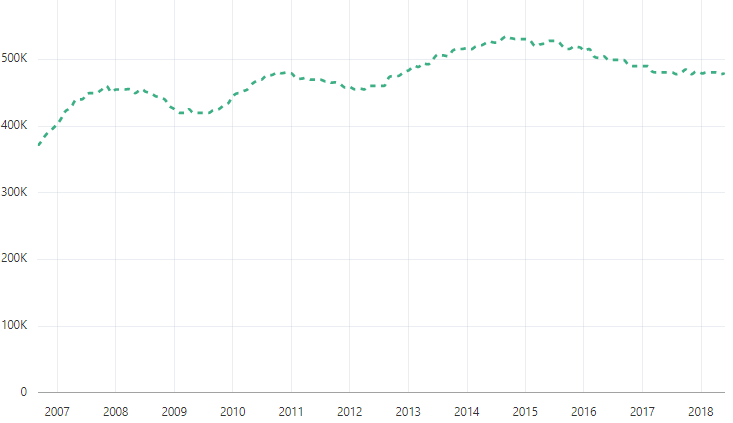
At least prices stopped falling, but still no benefit for investors. Those who thought Brisbane was at the bottom in 2017 were still waiting and kept waiting across 2018 and well into 2019 as well. BTW, across 2017 Hobart had double digit growth.
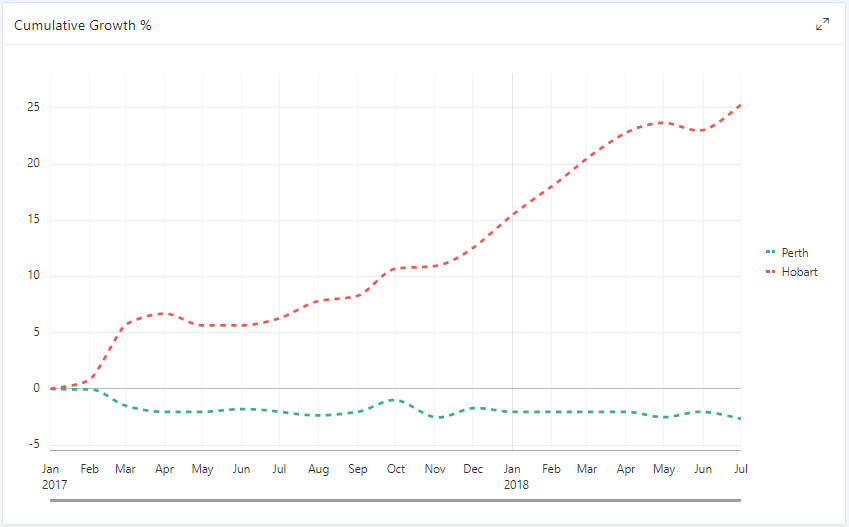
Around the same time Perth investors copped an extra loss.
But if you had chosen to buy in Hobart earlier, when was it at its bottom, when would you have decided to buy?
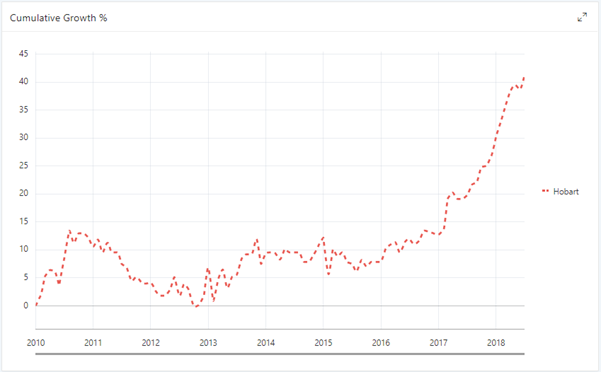
The chart shows that Hobart bottomed in late 2012, had a brief respite and bottomed a second time in 2015. Most counter-cyclical investors would have picked 2013 as the bottom.
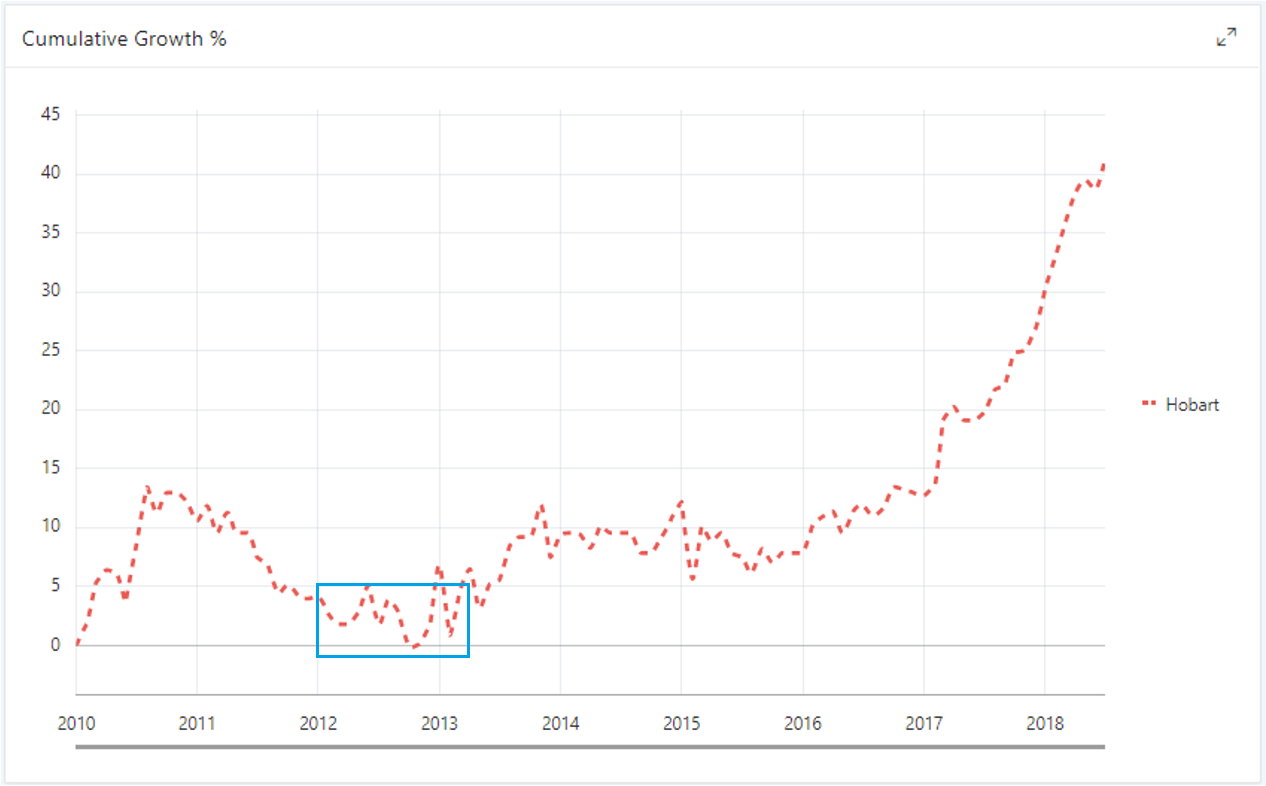
But if they had, they would have been holding on to an underperforming asset for 4 years. From 2013 to 2017 Hobart’s average growth rate was less than the national average and barely managed to beat inflation.
The best time to buy in Hobart wasn’t when it was at the bottom.
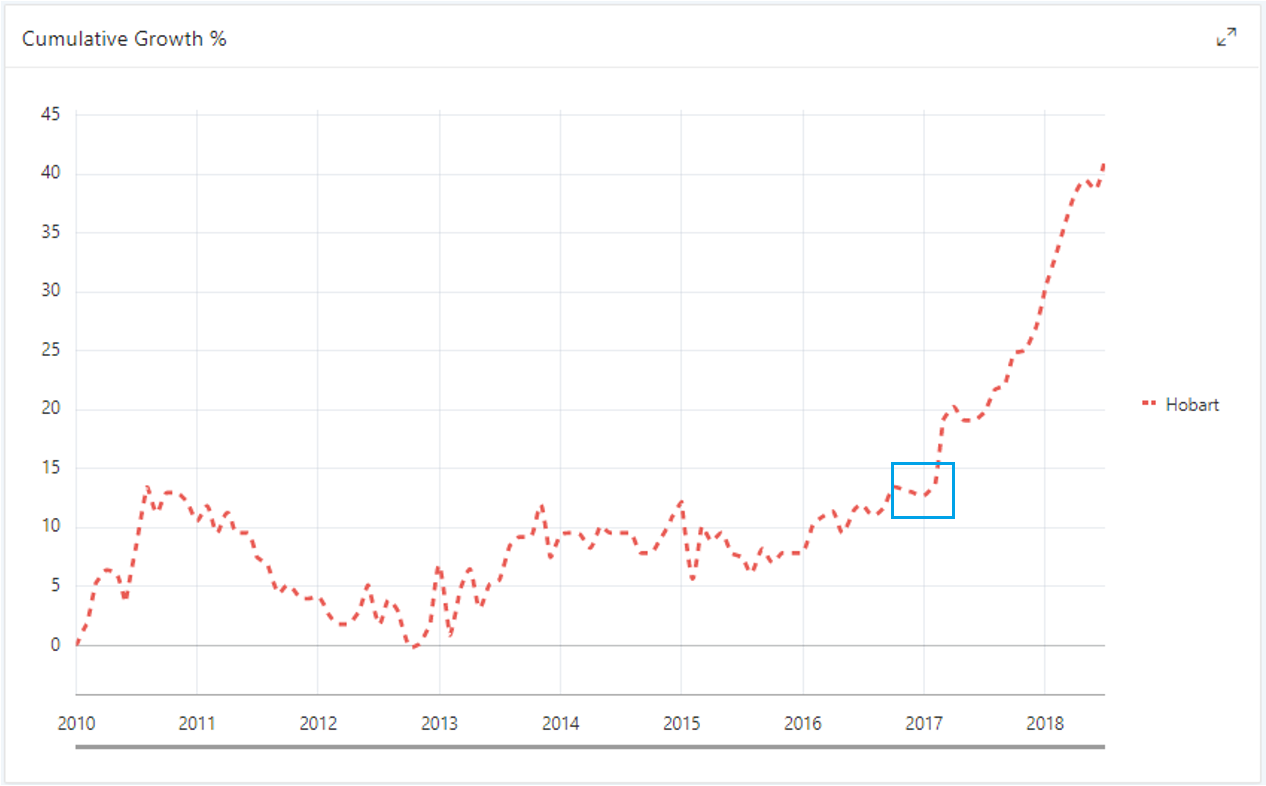
The best time to buy in Hobart was nowhere near the bottom – it was well after it, around late 2016 or early 2017. Investors who bought in Hobart in the latter half of 2012 had to wait 5 years to see double-digit growth.
Even those who bought in Hobart in 2014 had only about 5% growth in total over the next 3 years. During those 3 years Sydney piled on nearly 40%.
The Point
If you try to buy at the bottom, there’s a chance you’re not quite there yet and you endure further falls. So, even if you’re good enough to exactly time the bottom, you’re still too early because there’s usually an extended flat period following the bottom.
“The fastest rate of growth rarely follows on immediately after a recovery”
Mediocre growth can hang around for nearly a decade in some cases. Sydney’s boom from 2013 to 2018 consisted of about 70% capital growth over the entire 5-year period.
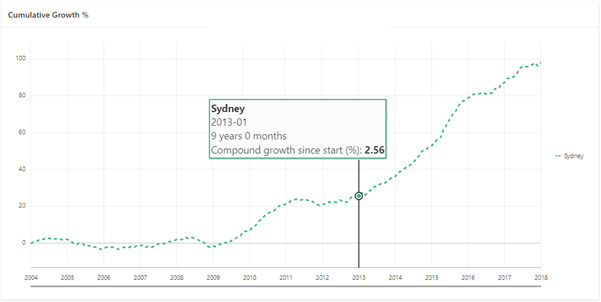
But for the 9 years preceding it, the compound growth rate was only about two and a half percent.
The following chart shows another example.
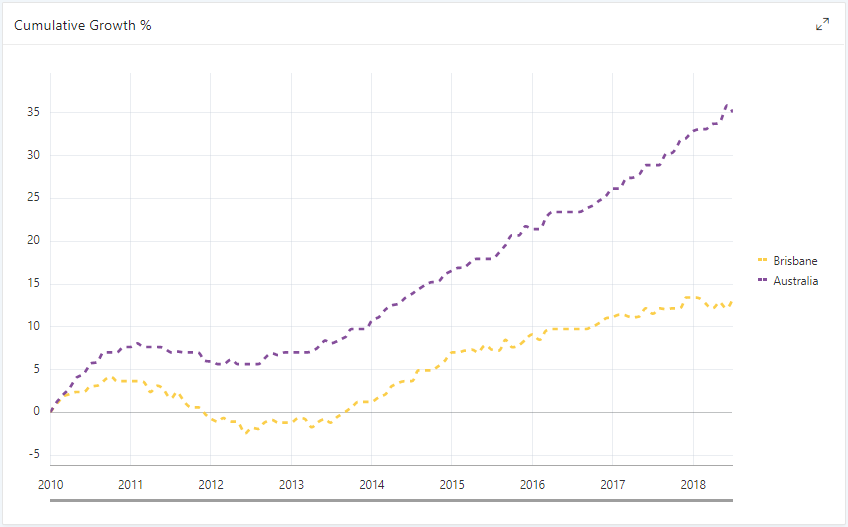
Brisbane had a tough time from 2011 to 2013 but then recovered. But was this an opportunity to buy at the bottom?
No, despite how good the growth appears in the chart, Brisbane underperformed the Australian average growth rate for the entire period shown. Even the growth rate from 2013 onwards was only 2.5% per annum. It didn’t stay at the bottom, but it didn’t tear up afterwards either.
How long then?
Research I conducted to estimate the period of time a property market spends in these lack-lustre growth periods found that there is no “typical market cycle period”, but if you had to calculate one, it would be about 5 years.
Approximately 31% of a market cycle is spent in boom with double-digit growth per annum.
29% of the cycle is spent in a flat or declining phase of 5% or less growth per annum. This includes negative growth or corrections.
And for 40% of the cycle, the market growth is moderate.
Conclusion
It takes a long time for an economy to recover and for prices to find their new balance point. Don’t simply buy at the bottom expecting prices to bounce right back up again. It takes many years of being in a recovered economy for confidence to return to buyers and for demand to build up again.
Property markets move very slowly, especially large markets like state capitals. They can’t turn around like a dingy with an outboard. They’re like oil tankers. There’s plenty of time to watch them do their 3-point turn. Once they have, jump in.
....................................................................................
 Jeremy Sheppard is head of research at DSRdata.com.au.
Jeremy Sheppard is head of research at DSRdata.com.au.
DSR data can be found on the YIP Top suburbs page.
Click Here to read more Expert Advice articles by Jeremy Sheppard
Disclaimer: while due care is taken, the viewpoints expressed by contributors do not necessarily reflect the opinions of Your Investment Property.